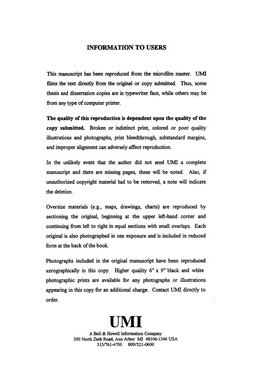| dc.contributor.advisor | Whitecotton, Joseph, | en_US |
| dc.contributor.author | Brown, Carol Lynn. | en_US |
| dc.date.accessioned | 2013-08-16T12:29:33Z | |
| dc.date.available | 2013-08-16T12:29:33Z | |
| dc.date.issued | 1997 | en_US |
| dc.identifier.uri | https://hdl.handle.net/11244/5446 | |
| dc.description.abstract | Coming to Kashi: Ethnography of an American Ashram focuses on the growth and history of a "new religious movement, " its principal commune, Kashi Ashram, in Sebastian, Florida, and on the stories of its residents and the guru, Ma Jaya Sati Bhagavati. In this study Globalization Theory (M. Kearny) is utilized to explicate the development of the movement. For interpreting the role and impact of the guru, theories include Max Weber's classic work on charisma and prophet types, among others. Here, adjustments have been made to rethink earlier theories, like Weber's, that present a clear demarcation between Eastern and Western religious traditions, especially in light of population flows and the distribution of information beyond national boundaries. | en_US |
| dc.description.abstract | Unifying history and ethnography, and identifying the Kashi community in a global context allows us to view this religious movement with regard to the "big picture, " an anthropological approach that may best suit our intercultural and transnational Information Age. It is part of the process of today's unbounded world system. | en_US |
| dc.description.abstract | Supporting this global theorizing, special attention is paid to the following: the history of Hinduism in America, the turmoil of the 1960s and following, the decline of denominational Protestantism in the United States, the relationship between capitalism and Protestantism (Weber), the role of science in theorizing and in developing coping alternatives to normative social mechanisms, the media's influence, and the impact of yoga, mysticism and humanitarian service as significant expressions of personal spiritual realization. The tradition of the Goddess, particularly the Hindu Goddess Kali, is discussed with respect to the feminist movement and the role of a strong feminine role model, which is evident in the person and personality of the guru. Other issues addressed include: how followers of Ma Jaya came to meet her, why they have chosen to take this path in life, and how their religious traditions have changed from those of their childhood traditions (where applicable). Employing Rodney Stark's model for the potential success of "new religious movements, " Kashi is compared to see how it might fare in the future. | en_US |
| dc.format.extent | ix, 221 leaves ; | en_US |
| dc.subject | United States Religion 1960- | en_US |
| dc.subject | Folklore. | en_US |
| dc.subject | Religion, General. | en_US |
| dc.subject | Kashi Ashram (Sebastian, Fla.) | en_US |
| dc.subject | Anthropology, Cultural. | en_US |
| dc.subject | Ma, Jaya Sati Bhagarati. | en_US |
| dc.subject | Ashrams United States. | en_US |
| dc.subject | Women's Studies. | en_US |
| dc.title | Coming to Kashi: Ethnography of an American Ashram. | en_US |
| dc.type | Thesis | en_US |
| dc.thesis.degree | Ph.D. | en_US |
| dc.thesis.degreeDiscipline | Department of Anthropology | en_US |
| dc.note | Major Professor: Joseph Whitecotton. | en_US |
| dc.note | Source: Dissertation Abstracts International, Volume: 58-02, Section: A, page: 0496. | en_US |
| ou.identifier | (UMI)AAI9722335 | en_US |
| ou.group | College of Arts and Sciences::Department of Anthropology | |
